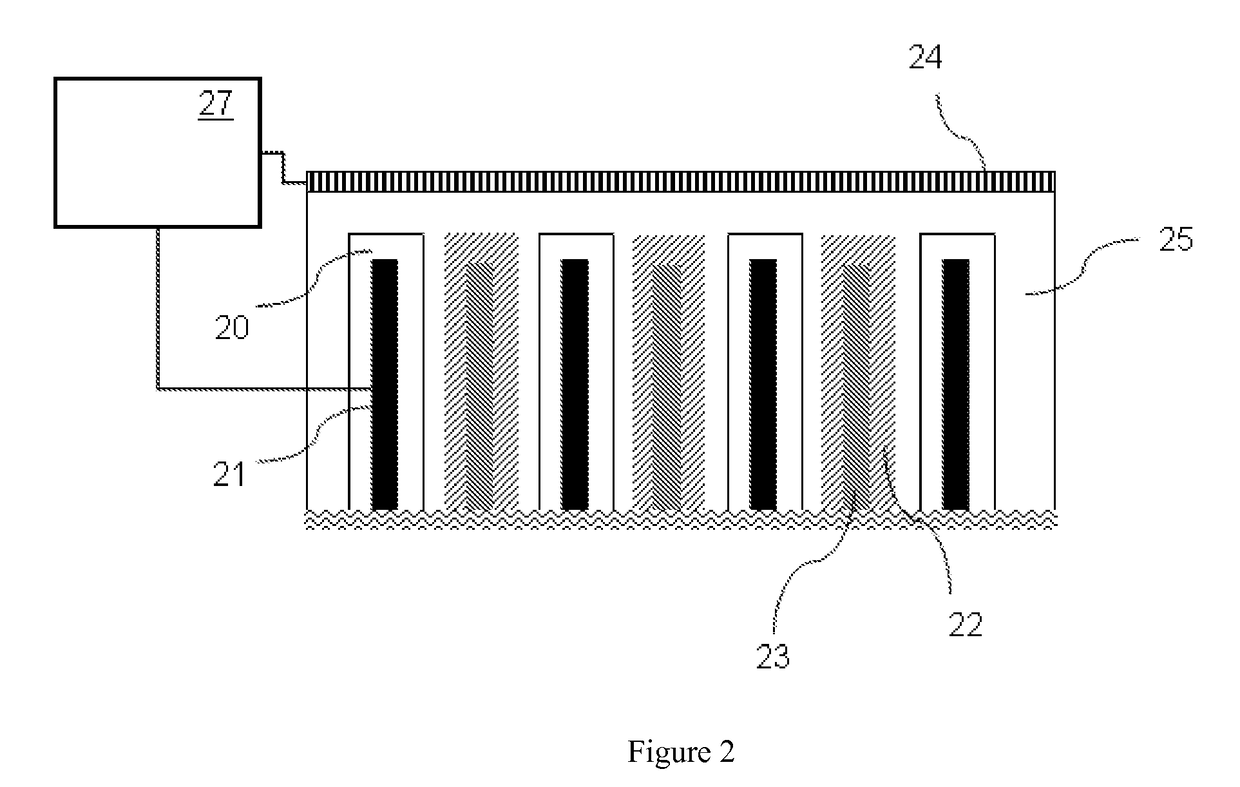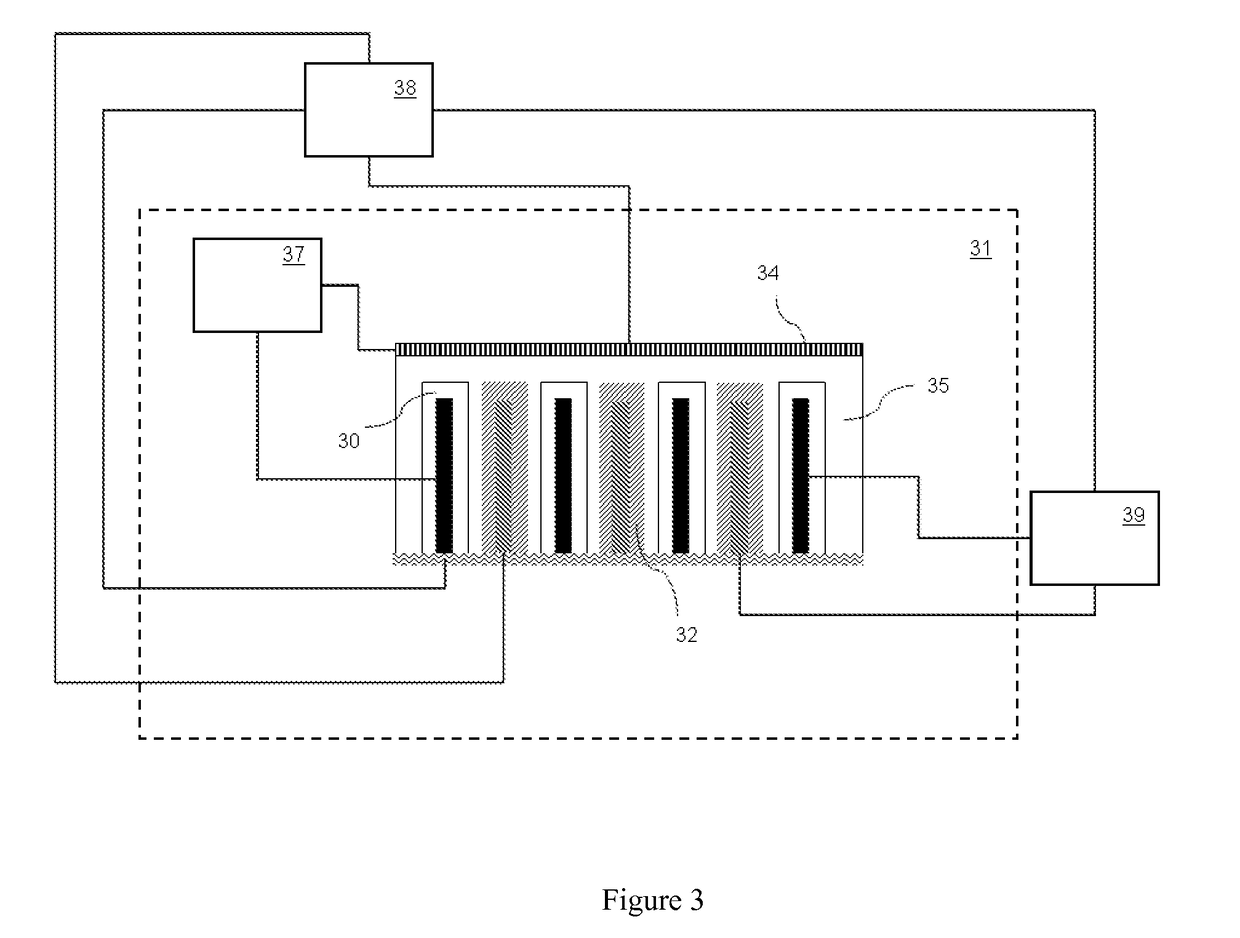Secondary battery with auxiliary electrode
a technology of secondary batteries and auxiliary electrodes, which is applied in the direction of cell components, primary cell maintenance/servicing, sustainable manufacturing/processing, etc., can solve the problems of significant drop in total overall capacity and loss of a large portion of the capacity of most existing secondary batteries
- Summary
- Abstract
- Description
- Claims
- Application Information
AI Technical Summary
Benefits of technology
Problems solved by technology
Method used
Image
Examples
example 1
Three-Dimensional Battery Cell with Lithium Foil Auxiliary Electrode as a Reference Electrode
[0042]A three-dimensional battery was constructed from a 1 cm by 1 cm silicon wafer containing two sets of walls, 120 microns tall, separated by a spacing of 100 microns. One set of walls served as a cathode and were coated with a paste comprising lithium nickel cobalt aluminum oxide, Carbon Black, and polyvinylidene difluoride. The other set of walls served as the anode. The anode and cathode walls were separated by a porous separator. A third electrode comprising a lithium metal foil was positioned above the walls and separated from the walls by a polyolefin separator (Celgard 2325). By placing the lithium foil on top of the three-dimensional structure, the lithium foil was electrolytically coupled with all the anode and cathode walls. The entire assembly was placed in a metalized plastic pouch, electrolyte added, and the pouch sealed. The cathode was cycled with respect to the lithium foi...
PUM
| Property | Measurement | Unit |
|---|---|---|
| distance | aaaaa | aaaaa |
| distance | aaaaa | aaaaa |
| average distance | aaaaa | aaaaa |
Abstract
Description
Claims
Application Information
 Login to View More
Login to View More - R&D
- Intellectual Property
- Life Sciences
- Materials
- Tech Scout
- Unparalleled Data Quality
- Higher Quality Content
- 60% Fewer Hallucinations
Browse by: Latest US Patents, China's latest patents, Technical Efficacy Thesaurus, Application Domain, Technology Topic, Popular Technical Reports.
© 2025 PatSnap. All rights reserved.Legal|Privacy policy|Modern Slavery Act Transparency Statement|Sitemap|About US| Contact US: help@patsnap.com



